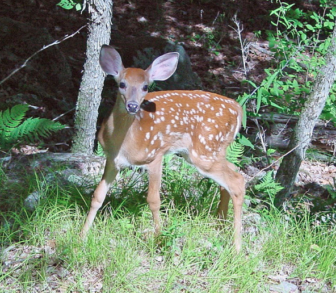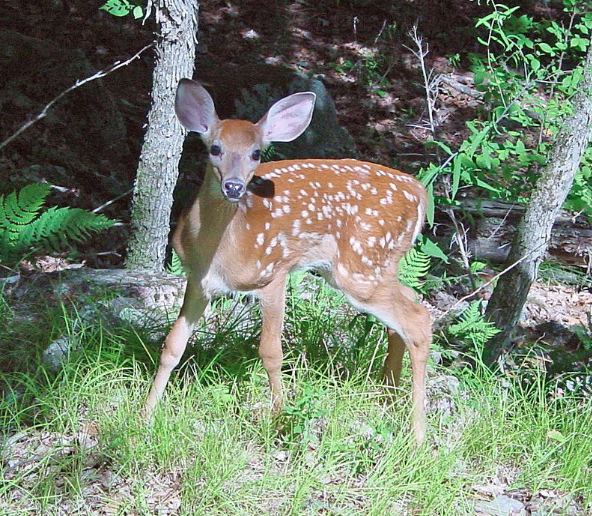The state Department of Energy and Environmental Protection (DEEP) estimates there were more than 4,000 deer strikes in Connecticut last year, most of which went unreported.
In fact, October, November and December – deer mating season — are the peak months for crashes in the Nutmeg State, according to a AAA Northeast crash data analysis, with more than three-quarters of the crashes occurring between outside daylight hours.
Deer crashes are most prevalent weekdays from 5 p.m. to 7 p.m., during the evening rush.

Crop by User:Veledan on Wikimedia Commons of a picture by "Elfer"
Don’t kill Bambi!
— an announcement from AAA Northeast, this region’s affiliate of the American Automobile Association
“Drivers need to be especially vigilant at dusk,” says Fran Mayko, AAA Northeast’s spokeswoman. “Deer present dangers to you, to your vehicle, and to themselves so it behooves everyone to be prepared since such crashes can be costly, even deadly.”
According to the UCONN Crash Data repository, deer strikes contributed to fatal crashes in each of the past two years.
In AAA Northeast’s territory of Litchfield, Fairfield, and New Haven Counties, the highest number of reported strikes occurred in Newtown (33) and Norwalk (25). Statewide, Glastonbury had the greatest number (34) strikes.
In the event of a collision with any animal, AAA Northeast recommends drivers:
- Call police immediately following the collision
- Activate the vehicle’s hazard lights and if possible move your vehicle out of harm’s way.
- Avoid contact with the animal; a frightened or wounded animal can hurt you.
Many tips to avoid deer crashes are similar to tips to avoid any crash, says Mayko:
- Scan the road ahead of you, including the shoulder. Deer can very well dash out from wooded areas adjacent to roads.
- Be especially attentive in the early morning and evening hours – the prime commuting times — when many animals are most active.
- Be careful rounding curves and climbing hills where visibility is limited.
- Follow the speed limit. Maintaining a proper speed allows you more time to respond to unexpected wildlife movements.
- Take Deer Crossing and other wildlife signs seriously. One long blast on your horn may frighten animals away from your car if you spy them early enough.
- If a collision can’t be avoided, apply your brakes firmly and try to remain in your lane. Swerving to avoid the animal may cause you to lose control of your vehicle and create a more serious crash.
- Most important, buckle up and expect the unexpected.


